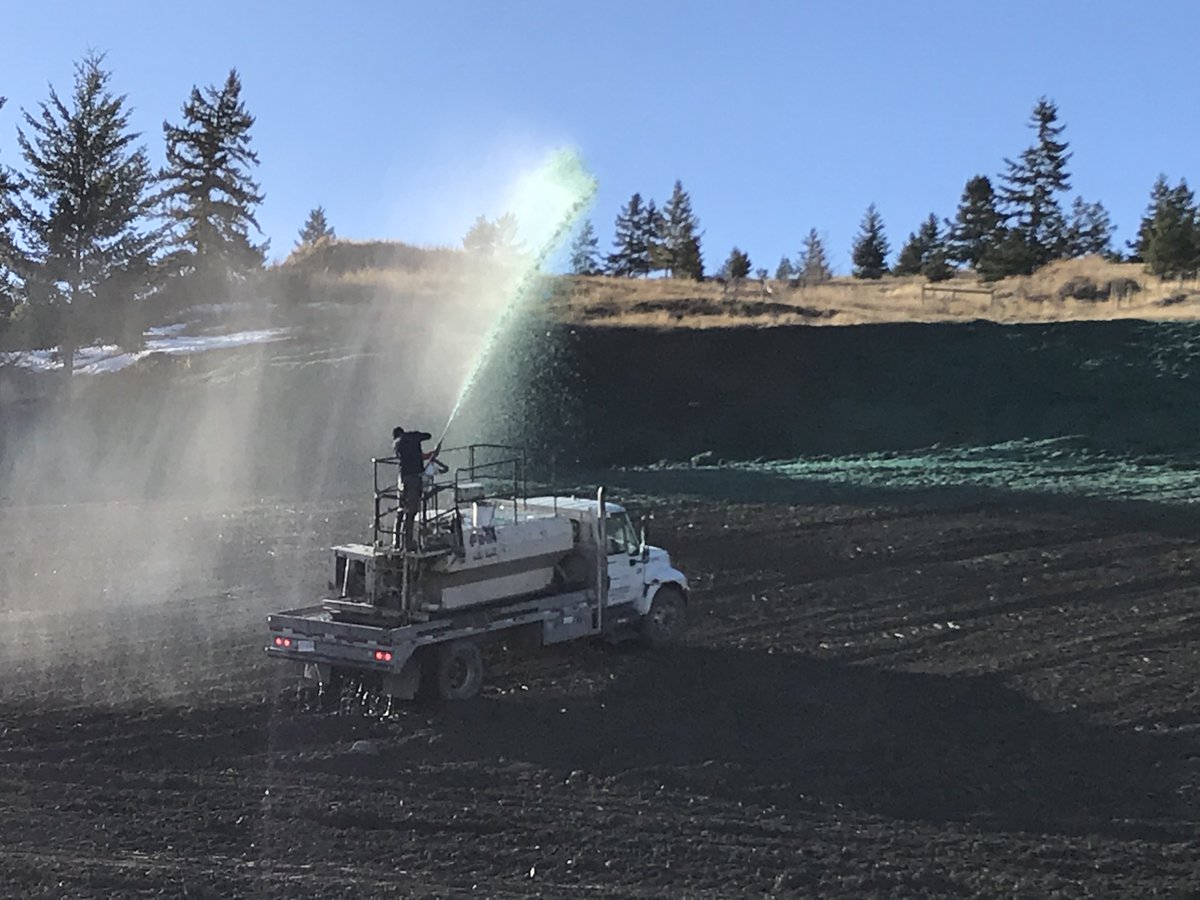
What goes into the Hydroseeding Mix?

Almost any type of seed can be used in a hydroseeder, and hydro seeding doesn’t require any special seeds to be included in the hydroseeding mix.
Some of the most common seeds used are grass seeds (like rye grasses, blue grass and fescue), wildflower seeds like bluebells and buttercups, and seeds for erosion control such as crown vetch.
And you can, of course, create your own bespoke blend of seeds – for example a custom grass blend made up of several varieties with the qualities you need for your particular climate and circumstances.
Aside from the seeds though, what else goes into the hydroseeding mix?
The blend you use should be determined by your goal end result, together with consideration of environmental factors like soil quality and climate. Price, ease of application, and availability will also be factors to consider.
First of all, the composition of the hydroseeding mulch depends largely on what type of hydroseeding mulch you’re using. There are several different varieties and each uses a different core material as its basis.
One of the most common types of hydroseeding mulch is paper mulch, which is made from chopped up paper (often newspaper) mixed with a blue/green dye as a visual aid to help ensure even coverage. Paper mulch is a popular choice because it offers high performance at a low cost.
For a mulch that retains more water than paper mulch, wood mulches are a good option – however the enhanced water absorption can mean that they’re not suitable for use in hydroseeding jet machines. They’re an ideal choice for establishing vegetation where irrigation is not in place.
A blend of part paper and part wood mulch can be used to achieve a hybrid mulch. A blend of 70% wood blended with 30% paper is often considered optimum, and is ideal for most projects. It offers the best of both worlds as you get a homogeneous and consistent mix, coupled with superior water absorption.
Erosion control mulches are high performing mulches that consist of wood mulch with substances added to make them ‘stick’ better, for enhanced erosion control. While these additives can make for a very high performance mulch with unrivaled erosion control properties, they are often more expensive.
Other types of mulch are fairly self explanatory based on the names – like straw mulch and cotton mulch – and paper and wood mulches can also be blended in different ways to create pourable mulches.
Apart from the core ingredients that make up the basis of the mulch, there are several other substances that you will find included in hydroseeding mixes.
Fertiliser is often included for obvious reasons, but it can also be excluded and applied separately once the hydroseeding is complete. Bio-stimulants can also be added to the mix to help encourage healthy growth. In fact, the addition of bio-stimulants in the mulch mixture can mean that less fertiliser is necessary for optimum growth.
If crops are likely to need additional hydration, co-polymer gels called tackifiers can be added to the hydroseeding mix. These substances hold many times their weight in water, which then diffuses into the seed bed over time.
As well as having excellent hydrating properties, tackifiers like polyacrylamide products act like a glue to bond the seed and fertilisers with water in the hydroseed mulch. They also increase the longevity of the hydroseed mulch and help to prevent weather erosion.